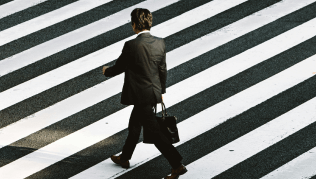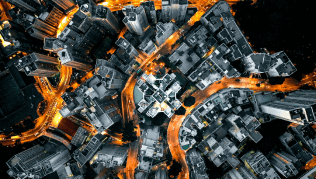Photography is more than just capturing images—it’s about storytelling, experimentation, and continual growth. For photographers, creative evolution is essential, and finding new perspectives often requires stepping outside familiar environments and routines. One of the most effective ways to push creative boundaries is through artist residencies, which offer photographers a dedicated space to explore, experiment, and engage with new ideas, free from the distractions of daily life.
Photography residencies provide invaluable opportunities for photographers to develop their craft, work on specific projects, and immerse themselves in new cultural or natural environments. In this article, we’ll explore how photography residencies can significantly impact creative practice, offer insight into the unique benefits these programs provide, and discuss how ZiiP Foundation plans to support photographers through its own residency programs.
Table of Contents
What Are Photography Residencies?
Photography residencies are structured programs where photographers are provided with the time, space, and resources to focus on their work in a new environment. These residencies often take place in inspiring locations, from bustling cities to remote natural landscapes, and provide artists with access to studios, mentors, and peers. The duration of residencies can vary, ranging from a few weeks to several months, depending on the program.
The goal of an artist residency is to encourage creative exploration, provide new experiences, and foster a sense of community among artists. Residencies are typically hosted by cultural institutions, galleries, foundations, or artist collectives and can be tailored to specific art forms or open to multidisciplinary approaches. In the case of photography residencies, the focus is often on visual storytelling, experimentation with new techniques, and developing long-term projects.
The Benefits of Photography Residencies
For emerging and established photographers alike, participating in a residency can be a transformative experience. The following are some of the key benefits that photography residencies offer in advancing the creative practices of photographers:
1. Dedicated Time and Space for Creative Exploration
One of the most significant advantages of artist residencies is the opportunity for photographers to dedicate uninterrupted time to their craft. Free from the demands of everyday life, such as work or family responsibilities, photographers can fully immerse themselves in their projects. This focused time allows them to explore new ideas, techniques, and concepts without the pressure of deadlines or commercial constraints.
Residencies offer photographers a rare chance to step away from their regular routines and environments, which can be creatively invigorating. The new surroundings, whether it’s an urban environment or a natural landscape, provide fresh perspectives that can lead to groundbreaking work.
2. Access to Mentorship and Collaborative Opportunities
Many photography residencies provide mentorship opportunities, where participants can engage with established photographers, curators, and other industry professionals. These mentors offer valuable feedback, guidance, and support, helping photographers refine their artistic vision and technical skills. For emerging photographers, mentorships can open doors to networking opportunities and career development.
In addition to mentorship, residencies often foster collaboration between artists from different backgrounds. Photographers may work alongside painters, sculptors, or writers, leading to interdisciplinary projects and new ways of thinking about their craft. These collaborative experiences can challenge photographers to break away from traditional methods and explore innovative approaches to visual storytelling.
3. Creative Experimentation and Risk-Taking
Residencies encourage photographers to take creative risks and experiment with new techniques or themes that they might not explore in their usual work. The supportive, non-commercial environment of a residency provides the freedom to try new things without the fear of failure. Whether experimenting with analog photography, working in alternative mediums, or exploring complex social or political themes, photographers in residencies are encouraged to push the boundaries of their creative practice.
For example, photographers may experiment with long-exposure techniques, unconventional camera angles, or mixed-media installations. The residency space becomes a laboratory for testing new ideas, leading to creative breakthroughs that might not have been possible in more structured, commercial environments.
4. Cultural Immersion and Global Perspectives
Many photography residencies take place in culturally rich locations that provide artists with access to unique communities, histories, and landscapes. By immersing themselves in a new cultural or geographic environment, photographers can gain fresh perspectives that inform their work. This immersion often leads to a deeper understanding of local traditions, narratives, and challenges, inspiring photographers to create more nuanced and culturally sensitive work.
For example, a photographer participating in a residency in Southeast Asia may gain insights into the region’s cultural practices and social issues, which could lead to a documentary photography project exploring the effects of climate change on local communities. Cultural immersion not only enriches the photographer’s work but also helps in developing a broader, more global perspective on storytelling.
5. Professional Growth and Exposure
Photography residencies can serve as important milestones in a photographer’s career. Many residencies culminate in exhibitions, publications, or public presentations of the photographer’s work, providing a platform for gaining recognition and exposure. These events often attract curators, gallery owners, and collectors, offering photographers the opportunity to connect with key figures in the art world.
Additionally, the work produced during a residency can serve as a powerful addition to a photographer’s portfolio, showcasing their ability to think creatively and take risks. Participating in a well-regarded residency program can also elevate a photographer’s profile and lead to invitations for future exhibitions, residencies, or collaborative projects.
How ZiiP Foundation Will Support Photographers Through Residencies
The ZiiP Foundation recognizes the immense value that residencies offer to photographers and is committed to supporting their creative growth through its own residency programs. ZiiP’s vision is to provide photographers with the resources, mentorship, and space needed to push their creative boundaries and develop work that reflects the complexity and richness of contemporary photography.
1. Residencies in Culturally Rich Locations
ZiiP Foundation’s residency programs will be located in culturally significant regions, providing photographers with the opportunity to immerse themselves in diverse communities and landscapes. These residencies will offer photographers the chance to explore new environments and gain a deeper understanding of global narratives, contributing to more nuanced and impactful storytelling in their work.
Whether the residency takes place in a vibrant city or a remote natural setting, ZiiP will ensure that participants have access to the cultural and geographic resources that can inspire their creative practice.
2. Mentorship and Peer Collaboration
ZiiP Foundation’s residencies will emphasize mentorship and collaboration as essential components of the creative process. Photographers will have the opportunity to engage with experienced mentors who can provide feedback on their work, guide their creative direction, and offer career advice. Additionally, ZiiP’s residencies will foster a sense of community among participants, encouraging collaboration across disciplines.
By facilitating connections between photographers and other artists, ZiiP Foundation’s residencies will encourage creative risk-taking and experimentation, helping participants expand their artistic horizons.
3. Exhibitions and Public Engagement
At the conclusion of each residency, ZiiP Foundation will organize exhibitions, presentations, or publications to showcase the work produced during the residency. These events will provide photographers with valuable exposure and the opportunity to engage with the public, curators, and collectors. ZiiP’s commitment to public engagement will ensure that the work created during the residencies reaches a broader audience, furthering the impact of the photographer’s creative exploration.
4. Focus on Creative Innovation
ZiiP Foundation’s residencies will prioritize creative experimentation and innovation, encouraging photographers to explore new ideas and techniques. Whether working with new technologies, experimenting with alternative processes, or tackling complex social issues, participants will be supported in pushing the boundaries of their artistic practice.
ZiiP believes that fostering creative innovation is essential to the growth of photography as an art form, and its residency programs will be designed to provide photographers with the tools and resources they need to create bold, original work.
Conclusion
Photography residencies provide invaluable opportunities for photographers to push creative boundaries, experiment with new techniques, and develop their artistic voice in a supportive environment. By offering dedicated time and space, mentorship, and access to new cultural contexts, residencies help photographers advance their practice and achieve personal and professional growth.
Through its commitment to fostering creativity and cultural exchange, the ZiiP Foundation will play a vital role in supporting photographers on their creative journeys. ZiiP’s residency programs will provide photographers with the resources and guidance they need to take their work to new heights, while also contributing to the global photography community by promoting innovation and collaboration.
For photographers seeking to challenge themselves, explore new ideas, and expand their creative horizons, residencies offer the perfect platform for artistic growth and experimentation. And with organizations like ZiiP Foundation dedicated to supporting these endeavors, the future of photography is bright, bold, and boundless.

